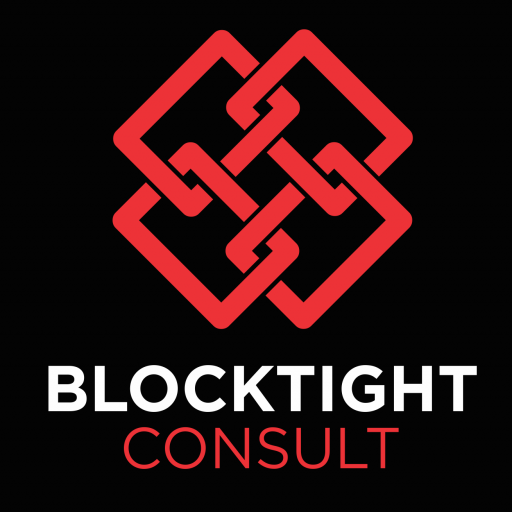In the ever-evolving landscape of modern design, constraints and caps serve as fundamental tools that guide creativity, influence perceptions, and shape user experiences. While at first glance limits may seem like restrictions, they often act as catalysts for innovation, providing a framework within which designers can excel. This article explores the multifaceted role of limits, from their psychological effects to their strategic application across various disciplines, illustrating how understanding and leveraging caps can elevate both aesthetic appeal and functional effectiveness.
- Understanding the Role of Limits in Modern Design
- The Educational Significance of Limits in Creative Processes
- The Concept of Caps: Types and Applications in Design
- Case Study: Modern Illustration of Limit-Driven Creativity
- The Power of Limits in Shaping Consumer Choices
- Non-Obvious Perspectives: Cultural and Psychological Forces
- Future Trends: Redefining Limits with Emerging Technologies
- Practical Guidelines: Leveraging Limits Effectively
- Conclusion: Embracing Constraints as Opportunities
Understanding the Role of Limits in Modern Design
Constraints and caps in design are deliberate boundaries set by creators to streamline decision-making and focus attention. These can be physical, digital, or conceptual, serving to reduce complexity and guide aesthetic or functional choices. For example, a designer might limit color palettes to evoke a specific mood or restrict layout options to ensure clarity. Such limits impact user experience by fostering familiarity and reducing cognitive overload, making interactions more intuitive. Ultimately, they influence both the visual appeal and practical usability of a product, balancing freedom with structure to create compelling designs.
The Educational Significance of Limits in Creative Processes
Historically, constraints have been instrumental in fostering innovation. The famous Renaissance masters, for instance, worked within the limits of available materials and technologies, which spurred inventive techniques. Similarly, the constraints of early digital screens prompted designers to develop minimalist interfaces that remain prevalent today. Limits challenge creators to problem-solve and think outside the box, leading to groundbreaking solutions. Striking a balance between freedom and restriction is vital—overly rigid constraints stifle creativity, while too much freedom can cause chaos. Effective limits serve as scaffolds that guide, rather than hinder, innovation.
The Concept of Caps: Types and Applications in Design
Physical Caps and Boundaries
Physical caps include tangible boundaries like the edges of architecture, the frame of a painting, or the limit of a sculpture. For example, the Pantheon’s dome is a physical cap that defines its spatial volume, influencing how visitors perceive its grandeur. Architectural elements such as railings or wall height restrictions serve functional and aesthetic roles, dictating safety standards and visual harmony.
Digital Design Caps
In digital environments, caps include resolution limits, color palettes, and interface constraints. For instance, early mobile screens had strict pixel resolutions, which shaped icon design and layout strategies. Modern digital design often employs color caps—like a restricted palette—to create cohesive visual identities, as seen in branding efforts or app interfaces. These digital caps streamline user interaction and maintain consistency across platforms.
Cultural and Historical Caps
Cultural traditions also impose design caps. For example, the hoop earrings from 2500 BCE Sumerian culture exemplify how societal norms influence jewelry design. Similarly, game rules such as roulette’s red and black caps create predictable patterns that influence player behavior. These cultural and historical limits shape aesthetic preferences and functional standards across generations.
Case Study: Modern Illustration of Limit-Driven Creativity
A compelling example of contemporary design leveraging limits is the digital game click here for demo. The game’s visual language, exemplified by the aesthetic of Star Supreme, demonstrates how caps in digital design shape perception. Using a restricted color palette, precise glow effects, and controlled Gaussian blur (15-20 pixels), designers create vivid yet harmonious visuals that captivate users. These deliberate constraints enhance clarity and brand recognition, illustrating that strategic application of limits can foster engaging and memorable experiences.
| Design Element | Limit Applied | Impact |
|---|---|---|
| Color Palette | Restricted to 5 colors | Creates visual cohesion and brand identity |
| Gaussian Blur | 15-20 pixels | Optimizes glow effects, balancing sharpness and softness |
| Resolution | Limited to 1080p | Ensures compatibility across devices and smooth performance |
The Power of Limits in Shaping Consumer Choices
Caps influence perceptions of value and exclusivity. Limited options often increase perceived desirability; for example, curated collections or exclusive editions appeal to consumers seeking uniqueness. The concept is rooted in behavioral economics—fewer choices can reduce decision fatigue and enhance satisfaction. Historically, gambling exemplifies this dynamic. The classic roulette wheel, with its strict red/black caps, creates predictable patterns that influence betting behavior. Similarly, in product design, physical and digital caps guide consumer perceptions, making products seem more desirable through perceived scarcity and focused options.
Non-Obvious Perspectives: Cultural and Psychological Forces
Cultural traditions have long influenced design constraints. The enduring use of hoop earrings from ancient Sumerian culture exemplifies how societal standards shape aesthetic norms. Psychological effects also play a vital role—familiarity with constraints fosters comfort, while novelty within limits stimulates curiosity. Environments with defined boundaries, such as themed spaces or minimalist interfaces, evoke specific emotional responses. As societal values evolve, so do the constraints, reflecting technological capabilities and cultural priorities. Recognizing these underlying forces allows designers to craft culturally resonant and psychologically engaging experiences.
Future Trends: How Emerging Technologies Are Redefining Limits
Advancements in AI and virtual environments are enabling dynamic, adaptive constraints that evolve based on user interaction. Personalized design experiences—like tailored interfaces or custom content—are increasingly shaped by real-time limits, enhancing engagement. For example, AI-driven platforms can modify visual complexity or interaction options to suit individual preferences, effectively loosening or tightening caps as needed. However, there are risks—overly restrictive limits may hinder creativity, while excessive freedom could dilute brand identity. Balancing these factors will be crucial as technology continues to redefine the boundaries of design.
Practical Guidelines: Leveraging Limits to Enhance Design Effectiveness
Effective design requires strategic application of caps. Recognizing when to impose restrictions can improve clarity and focus, such as limiting color palettes to establish brand consistency or constraining layout options to guide user flow. Conversely, knowing when to relax limits fosters innovation. For digital products, implementing visual effects within optimal Gaussian blur ranges (15-20 pixels) ensures clarity without sacrificing aesthetic appeal. Regular testing and iteration help determine the most effective caps, turning constraints into tools that amplify message and usability.
Conclusion: Embracing Constraints as Opportunities
Constraints and caps are not merely limitations—they are strategic tools that shape the landscape of modern design. By understanding their psychological, cultural, and technological dimensions, designers can harness limits to foster innovation, enhance user engagement, and create impactful experiences. Embracing these boundaries as opportunities rather than barriers encourages a mindset that values strategic restraint as a pathway to excellence. As technology evolves, so too will the nature of these limits, continually inspiring new ways to craft compelling and meaningful designs that resonate across cultures and generations.

